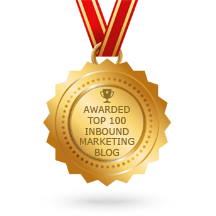 2016 has arrived and along with it comes the fresh perspective on the year ahead.
2016 has arrived and along with it comes the fresh perspective on the year ahead.
When it comes to marketing, this year we’re expecting the rollercoaster to continue with more industry disruption, new technologies and ever increasing power to be given to the consumer. Here’s some key marketing trends to watch in 2016:
Relationship Marketing
With smartphone usage set to top 2 billion in 2016 and competition for consumer dollars rife, expect companies to change marketing approach. In 2016 the new buzzword will be ‘relationship marketing’, but it’s really inbound marketing in another guise. Relationship marketing places the emphasis on customer retention and satisfaction over sales. They will use their data to engage directly with their customers in an attempt to create brand advocates — loyal customers who evangelise others. Mass marketing will continue its downward trends as companies place more emphasis on building relationships with their existing customers.
Mobile To Continue Its Dominance
We’ve known for some time that mobile web traffic is fast over taking traditional desktop browsing. That reality only became all the more stark when Google released an algorithm update in April that gives greater priority in its search rankings to websites that respond to smartphones and other mobile devices (cutely nicknamed ‘Mobilegeddon’).
While the impacts of the update may not have been as drastic as some had predicted, there is an important lesson for anyone trading online: you need to keep up.
Statistics from Our Mobile Planet paint a compelling picture about Australia’s mobile device behaviour:
- 94% of Australians have researched a product or service on their mobile device
- 90% of Australians report using the Internet on a daily basis
- 88% used Google for their mobile searches
- 86% of smartphone users look for local information on their phone and 88% take action as a result
- 80% of Australians use their phone while doing other things such as watching TV (48%)
- 45% have made a purchase on their mobile device
- 24% did not buy because of a slow loading mobile site
If you hadn’t realised it already, 2016 should be the year to make sure your website is delivering a solid user experience. If you’re still lagging in offering a responsive mobile version of your website, you’re going to be very hard to find online.
Virtual Reality Will Arrive
2016 will see the launch of Oculus Rift, the much-hyped virtual reality headset that immerses people in utterly lifelike virtual worlds. While the immediate applications are for gaming, it could be the new media disruptor, forever influencing the way people consume and interact with films, advertising, marketing — and even each other.
Oculus was acquired by social networking giant Facebook in 2014 for a reported $2 billion, with CEO Mark Zuckerberg noting that it has the potential to be the most social platform ever. It may look like something from a sci-fi movie, but Oculus Rift is very much real, and something every marketer should keep a close eye on in 2016.
The Internet Of Things
Blazing a path alongside Virtual Reality is the Internet of Things (IoT). At its most basic level this is the concept of all devices being programmed to connect with the internet, and also with each other. Essentially, a giant network of linked devices. Imagine a world when your alarm clock notifies your coffee maker that you’re awake and to start brewing coffee for you. Or a smoke detector that automatically alerts the fire brigade to a fire starting in your home. That’s IoT — and that world is a lot closer than you might think.
In many ways the move towards IoT has already begun and practical applications are already being used by everyone from light bulb companies to airlines. By 2020, there will be an estimated 30 billion IoT devices in circulation. The important point for marketers is that with all of these new devices going online, it’s going to generate a lot of new data. IoT is going to reveal more precise information around the buying habits of consumers and we must be ready to further refine our marketing tactics in response to the influx of information.
Marketing Automation
As marketing moves more towards content, companies are looking at ways to automate key components of their lead generation marketing. Software that can deliver emails, social media scheduling, posting content and organising leads is big business - $5.5 billion to be exact, and in 2016 companies will continue exploring ways to automate key sections of their marketing so they can concentrate on delivering great content.


 2016 has arrived and along with it comes the fresh perspective on the year ahead.
2016 has arrived and along with it comes the fresh perspective on the year ahead.
